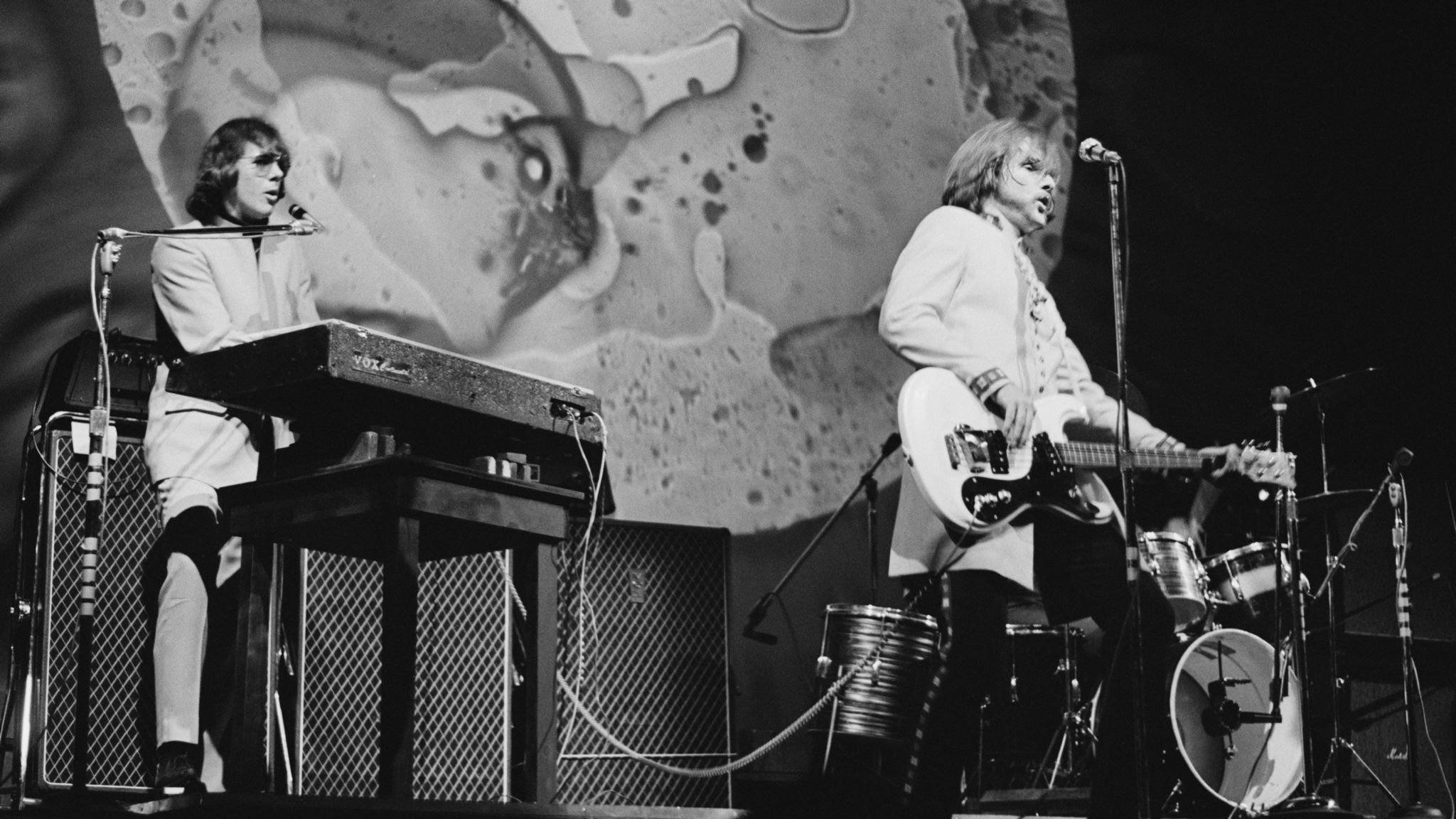It started out as a slurred lyric misheard by a bandmate and morphed into one of the signature songs of the psychedelic era. Iron Butterfly’s 17-minute “In-A-Gadda-Da-Vida” took root in the American consciousness on its release in 1968 and went on to enjoy an afterlife that spanned rock, disco and hip-hop. As The Simpsons episode where Bart tricks the church organist into playing the song shows, unexpected things can happen when you play around in the “garden of Eden”.
Iron Butterfly always wanted to do things differently. The Los Angeles quartet gave equal weight to organ, guitar, drums and bass, with no frontman, had little of the blues heritage of their peers and, as their name suggests, wanted to convey both light and heavy moods. “In-A-Gadda-Da-Vida” drew on Missa Luba — percussive renditions of the Latin Mass from the Democratic Republic of Congo — for the lengthy drum solos that would help make the song famous, while the organ arpeggios in the intro nod to Bach’s melodramatic Toccata and Fugue in D Minor.
They first performed it at the Whisky a Go Go in Los Angeles, where they were the house band, in 1968. The single (shortened to under three minutes) and the album of the same name, both released later that year, have sold several million copies each. For Klemen Breznikar, who runs the Psychedelic Baby website, the song “forecasts the dark events that will follow by the end of the ’60s and the end of the flower power movement”. For the band, the new demands it brought them in both performing and recording would be too much. Burnt out, bandleader Doug Ingle left in 1971. By that stage the band’s harder and darker motifs were being fully realised by British rock acts such as Black Sabbath and Led Zeppelin.
Avant-garde act The Residents took it to pieces on The Third Reich ’n Roll, their 1976 parody of pop music and advertising. Disco pop group Boney M covered it in 1980, offering a drily mechanical take on those hypnotic organ riffs, perhaps to allow the dancers to act as robot mannequins on TV performances. Thrash-metal band Slayer’s cover was notable for appearing on the soundtrack of the 1987 film adaptation of Brett Easton Ellis’s Less Than Zero. For a similar sense of foreboding (and vaguely comic air) to the original, try the folk-rock version from Yat Kha, the Moscow-based Siberian/Tuvan throat-singing act led by Albert Kuvezin.
But it was one of the earliest covers that would breathe most life into Iron Butterfly’s biggest hit. The Incredible Bongo Band were a group of LA session players who put an album out in 1973 on the back of the unexpected success of two songs scored for a film. Alongside tracks such as The Shadows’ “Apache”, their take on “In-A-Gadda-Da-Vida” would later find its way to DJs such as the Bronx’s Kool Herc, who prized extended percussive breaks for dancers and for MCs to rap over. A psychedelic rock song had played its part in the birth of hip-hop.
New York native Nas loved the Bongo Band’s take so much that he has sampled it twice, on “Thief’s Theme” from 2004 and more effectively on “Hip-Hop Is Dead” with will.i.am in 2006. “Those breaks are so hip-hop,” said Nas in 2006. It has turned up on at least two DJ Shadow mix albums and has had a clear influence on some of his own tracks such as “Organ Donor”.
A 1995 re-release of Iron Butterfly’s album by Rhino Records, with trippy lenticular artwork, aided the rediscovery of the song by the new hip-hop generation. But The Simpsons’ “Bart Sells His Soul” had a bigger impact. The track has since turned up in some unexpected places, including a drum and bass cover by High Contrast and as the name for a small-batch beer by Pomana Island Brew. The Salford brewer says the episode of The Simpsons and the availability of the song on the internet — more than 15m Spotify streams of the single, nearly 5m of the full-length album version (perhaps the 7.2% sour IPA will come in handy for that) — fuelled their fascination with the track.
“Wait a minute — this sounds like rock and/or roll,” says The Simpsons’ Reverend Lovejoy, rumbling Bart’s ruse. If “In-A-Gadda-Da-Vida” was a curveball at a pivotal moment for the 1960s counterculture, with no one quite sure whether it was hippy satire, proto-rock opera or something far more sinister, its ambiguity has not done it any harm.
What are your memories of ‘In-A-Gadda-Da-Vida’? Let us know in the comments section below.
‘The Life of a Song Volume 2: The fascinating stories behind 50 more of the world’s best-loved songs’, edited by David Cheal and Jan Dalley, is published by Brewer’s.
Music credits: Warner Music Group — X5 Music Group; BIS; UMC (Universal Music Catalogue); Mr Bongo; Sony Urban Music/Columbia; Virgin EMI
Picture credit: Don Paulsen/Michael Ochs Archives/Getty Images
